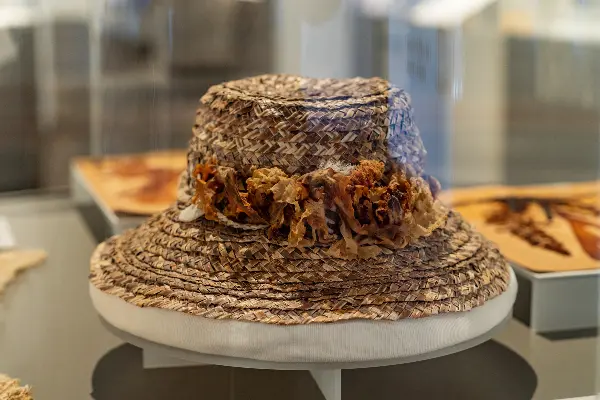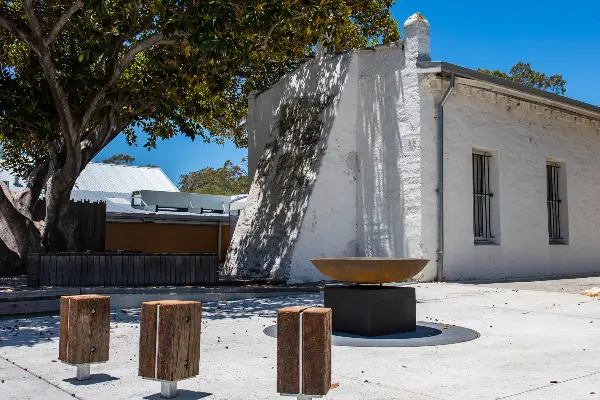The Wadjemup Museum is a place for visitors to gather and learn about the rich, complex history of Wadjemup / Rottnest Island. Home to a range of exhibits, ancient artefacts, and incredible sculptures, the museum encourages visitors to reflect on everything that has come before. Enter the Old Mill and Hay Store building and let the meaningful stories and interactive displays create a deeper understanding that you can take with you on your island journey.
Walking through Wadjemup Museum on Rottnest Island gives you the gift of perspective. You see the island through the lenses of those who came before you, beginning the journey of awareness, understanding, and deeper respect.
Nine museum experiences to broaden your perspective
Zephyr Scroll
One of the first objects you will see when entering the museum is the bow scroll of the S.S. Zephyr, which ferried passengers between Wadjemup and the mainland between 1907 and 1952. Hand carved from solid timber, the scroll contains images of the Western Australian black swan nestled amongst river reeds.
Mill Stone
The Wadjemup Museum has been built in the Old Mill and Hay Store, a place where the events of the past feel close. The remnants of the mill stone in particular create a visceral experience, as the Aboriginal men and boys who were held as prisoners on the island used it to grind wheat into flour. It sits in its original location, where up to eight Aboriginal prisoners would perform the arduous task of rotating the stones by pushing long wooden handles. It is the only known mill in Western Australia built to be powered by human hands.
Aboriginal stone flake tools
Explore one small part of the expansive local Aboriginal history through a selection of ancient spearheads that have been found on the island. These fascinating artefacts date back to between c. 8,000 and 40,000 BCE, and offer insight into the important connection the Noongar people have always had with Wadjemup.
Memorial Stone
At the beginning of World War I, Wadjemup was commandeered by the Department of Defence as an internment camp for enemy aliens, who were then at war with Australia. The Memorial Stone remnant is a unique relic created by the internees to signify their period of confinement on the island. Alongside the display sits a photograph taken by one of the internees, Karl Lehman, who captured moments from their time on the island. The picture shows the original Memorial Stone, and the translated German inscription reads:
‘c.1914-1915/in memory of our captivity/we brothers Austrian-Hungarian Slavs.’
Lighthouse Keeper’s jacket
The Wadjemup museum exhibits are full of artefacts that help ground historical facts and stories in reality, like the jacket of lighthouse keeper, Lionel Clarence Jacobs. Born in 1895 in Victoria, Jacobs was a permanent staff member at the Rottnest Island Station on a salary of 241 pounds per year.
Seaweed collages
The museum’s seaweed collages were created by Charlotte Duffield, a girl who lived on Wadjemup in the 1800s and gathered seaweed from around the island to make her artwork. She was the eldest daughter of Samuel Duffield, the lighthouse keeper on Wadjemup from 1854-1879. Charlotte and her six siblings spent most of their time down by the beach and reef, and her collages are a window into what their daily life was like.
Hallie’s Hat
Hallie’s Hat is another seaweed creation, this one made in the 1940s by Hallie Margaret Stow (1876 - 1972), from seaweed she collected around the island. Hallie is quoted in The West Australian newspaper saying, “The weed is soft to wear and durable in sun and rain, and it makes good garden hats…ideal also for sun basking swimmers.” (Hallie Margaret Stow, The West Australian, 1972). This beautiful object is on loan from the Western Australian Museum.
This museum is designed like a story. Each piece connects to another to tell the ever-changing story of Wadjemup. It’s the essential gateway to the island.













